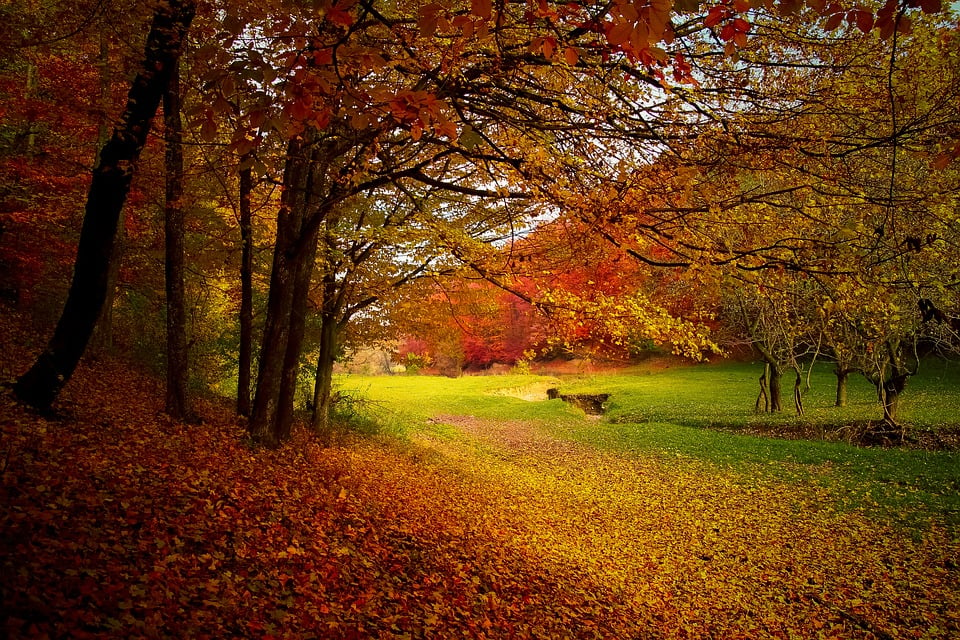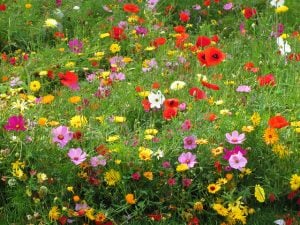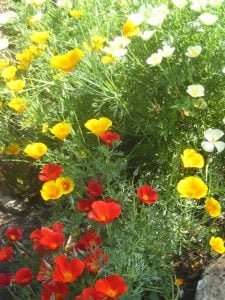A low maintenance garden for all seasons
Low Maintenance Garden
For a good looking, low maintenance garden, I recommend thinking big, thinking simple and making it your own.
And for a garden of any kind, be clear about what you want to use it for, make the space for that and include things that make you feel good.
What is it about a garden that makes you feel good?
Garden-wise, what would you really like to be able to see, smell, touch, taste and hear?
TIP Perhaps some things could be ‘borrowed’ from nearby. A very large tree with beautiful autumn leaves, for example, which may be too big for a town garden but could be living happily in the nearby park.
Francine Raymond describes how moving home and garden concentrated her mind on what was essential.
Favourite sights, smells and tastes that celebrate the seasons will vary from gardener to gardener, but the important thing is to welcome them and treat them with fanfare.
Tip 1 - Think Big
Have just a few big pots. They retain moisture better than small ones and that cuts down on watering.
Have big swathes of plants – perennials like hardy geraniums which suppress weeds; banks of colour of, for example, bee-friendly Sedum spectabile; low maintenance grasses like zebra grass or feather grass for privacy, or tussocky blue fescue.
Tip 2 - Think Simple
For low maintenance, don’t have too many different plants or other bits and pieces. Simplifying cuts down on visual clutter, stops your mind being clogged up and cuts short your list of what has to be done.
Pull the garden together with green as a backdrop for interesting foliage, bark, berries and colour.
It all depends on the size of your garden, of course but have, perhaps, just two great plants flowering during each season (bulbs are lowest maintenance) and one or two excellent evergreens for structure. So maybe 10 plants across the whole garden. You'll get to know them well so you’ll be able to weed and care for them easily and quickly. Your mind will be clear in the garden so you’ll be able to sit and enjoy it or do whatever else you like doing (see What garden things make you feel good? above).
Some low maintenance plant suggestions
In spring, bulbs (snowdrops, narcissi, grape hyacinths and all the rest) are the thing and perennials (periwinkle - blue or white - or hardy geraniums or euphorbia) will hide the dying bulb foliage. Hardy perennials also suppress weeds very nicely. Most have to be cut back in the autumn but that may be doable.
In summer, it has to be alliums – the early summer-flowering ornamental onions with strikingly spiky, round heads of mauve. They dry out and last, elegantly, on the plant until autumn. You could grow lavender for its flowers and fragrance but it will need to be cut back at the end of the summer.
In autumn, Sedum spectabile is no bother. A Japanese maple will provide stunning colour as its leaves change. Nerines are, in October and November, a ridiculous, almost unfeasible, candy pink shock - and they just like to be left alone.

Nerine bowdenii in Herefordshire in October. © Jonathan Billinger, licensed for re-use under Creative Commons Attribution-ShareAlike 2.0 Generic Licence.
In winter, how about bright yellow winter-flowering jasmine, or winter box (sarcococca) for its sweet smell, or hollies for their berries?
For evergreens and architectural plants, look beyond box to rosemary, yew and juniper. Or to the Mediterranean spurge known as 'Euphorbia characias wulfenii', and the striking and robust New Zealand flax, Phormium tenax, which will both provide good structure.

Mediterranean or Albanian Spurge in a front garden, High Street, Kenilworth. © Robin Stott and re-used under CC BY-SA 2.0 licence.
Tip 3 - Edit, Edit, Edit
Ask yourself what chore is the most annoying in the garden and see how you can edit it down or even edit it out. Thinking in this way really helps when creating a low maintenance garden.
Example 1. The Lawn
Lawns need care and attention.
You could have a small lawn or one with straight edges to make cutting quick and easy.
You could turn the lawn into a meadow by sowing some wildflower seed and only cutting the grass at the start and end of the season (except for perhaps narrow paths as a feature). This would attract wildlife into the garden.
You could lay artificial grass.
(Paving over the lot isn't a great idea as heavy rain's got nowhere to soak into, resulting in very big puddles and floods. Yikes!)
Example 2. Bedding plants
Don’t bother with bedding plants and use bulbs or perhaps hardy perennials to provide colour in the garden.
Good luck with designing a lovely low maintenance garden that suits you!
Sign up for our emails below, so we can send you blogs on gardening tips, as well as updates on our sales, so you don’t miss out on those garden furniture bargains!








